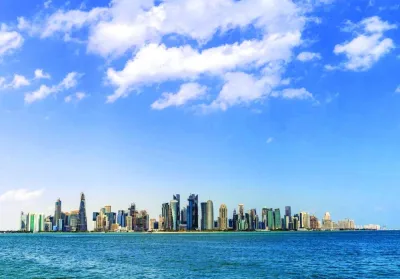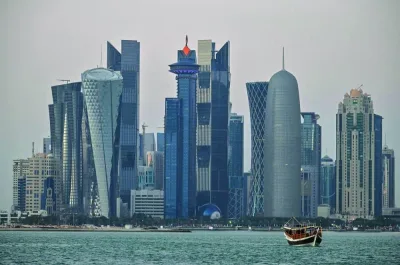Qatar's GDP per capita has been revised to $84,261 this year and $112,353 in 2027 by researcher FocusEconomics.
In its latest monthly update, FocusEconomics said Qatar's GDP per capita will scale up to $87,241 next year, $95,159 (2025) and $102,868 (2026).
The country’s GDP, according to FocusEconomics, will be $221bn this year, $226bn (2024), $244bn (2025), $261bn (2026) and $282bn (2027).
GDP growth has been estimated to be 2.4% this year and in 2024, rising to 4.8% (2025), 4.4% (2026) and 4.3% (2027).
Qatar’s merchandise trade balance, FocusEconomics said, will be $73.7bn this year, $71bn (2024), $69.6bn (2025), $72.8bn (2026) and $80.2bn (2027).
Current account balance will be $37.3bn this year, $34.1bn (2024), $37.9bn (2025), $35.4bn (2026) and $37.4bn (2027).
Fiscal balance (as a percentage of the country’s GDP) will be 6.5% this year, 5.6% (2024), 5.2% (2025), 6.3% (2026) and 7.1% (2027).
Public debt (as a percentage of Qatar’s GDP) will be 45.3% this year, 43.8% (2024), 43.8% (2025), 41% (2026) and 38% (2027).
Unemployment (as a percentage of the country’s active population) has been estimated at a meagre 0.2% until 2027.
According to FocusEconomics, the Qatari economy appears to have “performed well” so far this year. PMI data points to a “solid” expansion in the non-oil private sector in H1, aided by a booming tourism industry; visitor arrivals were up over 300% in annual terms in January–May and well above pre-pandemic levels.
Moreover, energy output rose by close to 4% year on year through May.
That said, higher interest rates and the end of the World Cup building boom weighed on the construction sector.
In late June, Qatar signed a long-term gas supply deal with a Chinese state-controlled company, following an identical deal with a different Chinese state firm last November and a similar supply agreement with Bangladesh reached earlier in June.
“This bodes well for long-term energy exports, and further energy contracts with Asian and European nations will likely be announced in the coming months,” FocusEconomics noted.
GDP growth is projected to roughly halve this year on a weaker construction sector and tighter monetary policy.
However, improved relations with Arab neighbours, a lasting boost to tourism from the World Cup and ongoing energy sector investment—both in fossil fuels and renewables—will provide support, the researcher noted.
Higher-than-expected interest rates are a downside risk. FocusEconomics panellists see GDP expanding 2.4% in 2023, which is down by 0.1 percentage points from one month ago, and expanding 2.4% in 2024.
Qatar Central Bank hiked rates from 6.00% to 6.25% in late-July, following the Federal Reserve’s same-sized hike.
Panellists see inflation moderating on average this year from last on tighter monetary policy, the end of the World-Cup-related demand surge and lower commodity prices.
Inflation fell to 2.5% in June from 2.6% in May.
FocusEconomics panellists see consumer prices rising 2.9% on average in 2023, which is up by 0.1percentage points from one month ago, and rising 2.3% on average in 2024.

In its latest monthly update, FocusEconomics said Qatar's GDP per capita will scale up to $87,241 next year, $95,159 (2025) and $102,868 (2026)



